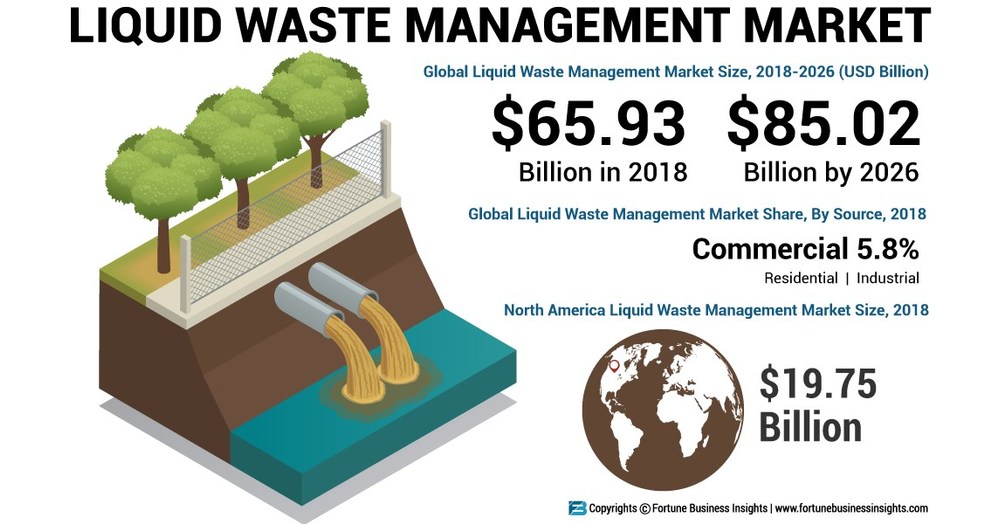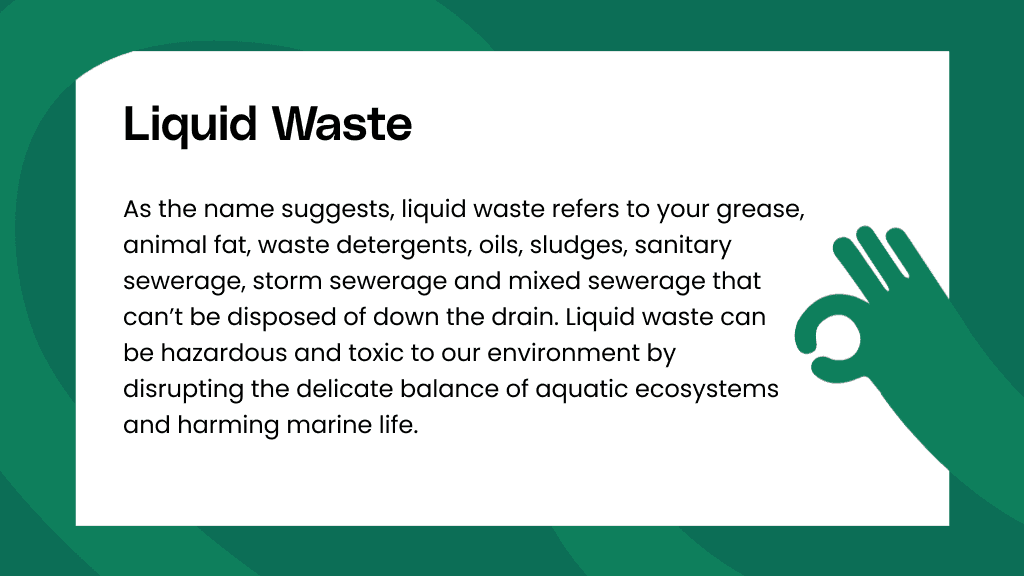Reclaim Waste for Dummies
Reclaim Waste for Dummies
Blog Article
Reclaim Waste Fundamentals Explained
Table of Contents10 Simple Techniques For Reclaim WasteUnknown Facts About Reclaim WasteSome Known Incorrect Statements About Reclaim Waste The 25-Second Trick For Reclaim WasteSee This Report on Reclaim WasteThe Buzz on Reclaim Waste
Through proper liquid waste management, business can minimize energy-intensive treatment procedures and disposal costs. By complying with a system for handling liquid waste, companies can avoid expensive fines and penalties and avoid negative promotion.Keep in advance of guidelines and preserve a secure work environment with a digitized conformity device. Classifying liquid waste is crucial for reliable storage, therapy, and disposal. Environmental, Wellness, and Security (EHS) teams, waste monitoring policemans, and compliance supervisors can handle these wastes securely and efficiently when they understand the essentials: Generated from houses, this type of liquid waste originates from toilets, sinks, showers, and cleaning devices.
(https://canberra.cataloxy.net/firms/reclaimwaste.com.au.htm)Collect depictive samples from numerous points within the waste stream to make sure accuracy. Liquid waste, specifically hazardous ones, positions considerable dangers during this step.
Some Ideas on Reclaim Waste You Need To Know
Segregate the waste based on its kind (e.g., unsafe or non-hazardous) to ensure ideal handling. Store waste in secure and leak-proof containers to avoid spills during collection. Tag the containers appropriately, including the kind of waste, possible risks, and handling directions. Load the protected bins into transport cars with vacuum vehicles or portable storage tanks.
is needed when the effluent will certainly be reused or discharged right into community swimming pools. Disinfection (e.g., chlorination, ultraviolet light, ozonation) and nutrient elimination (e.g., denitrification and phosphorus elimination) are advised under strict laws. This phase in the procedure is strictly controlled because it is when most dangers occur. Many firms broke several fluid garbage disposal policies over the last few years.
After choosing the most effective type of treatment method for liquid waste, firms must locate means to get rid of this appropriately. Right here are some reliable approaches of fluid waste management: receive most treated liquid waste that fulfills discharge standards. refers to using treated wastewater in agricultural lands for watering as long as the effluent satisfies sanitary levels per laws.
What Does Reclaim Waste Do?
are used by industries that generate big volumes of low-toxicity fluid waste. Superficial basins include fluid waste that is allowed to evaporate via natural processes. The residue left can be taken care of in land fills. includes melting fluid waste at high temperature levels and converting it right into gas and ash - liquid waste removal. This sort of disposal is subject to stringent environmental laws as a result of possibly unsafe exhausts.
The findings ought to be documented, evaluated, and kept not simply for entry to regulatory authorities yet additionally for making enhancements in the future. Share details with relevant stakeholders (e.g., employees, regulative federal government firms, and neighboring communities) to preserve openness and liability.
The Best Guide To Reclaim Waste
No matter of the firm size or industry, there are countless challenges associated with this job. Business that can not spend in centers ought to consider working together with the public industry for far better options (liquid waste removal).
Fluid waste describes any product in a liquid state that is excess, unwanted, or disposed of. One substantial challenge for firms is the lack of appropriate storage space facilities for liquid waste. Partnering with fluid waste services will greatly decrease this challenge Criterion avoid containers and other containers that are typically made use of for solid waste are usually inadequate for the one-of-a-kind needs of managing fluid materials.
The 4-Minute Rule for Reclaim Waste
This blog site delves into the features of fluid waste, going over just how spills and contamination incidents can be taken care of effectively. It also explores the measures companies can take to avoid future leaks and what to do when spills inevitably take place. Fluid waste contains any type of undesirable or surplus product that exists in a fluid kind and is established for disposal.
This kind of waste emerges when over here an item is no longer needed, a lot like any kind of other form of garbage. It is important to engage trained fluid waste monitoring specialists when delivering or disposing of liquid waste.

The Only Guide for Reclaim Waste
"material must pass with a 0.45-micron filter at a stress differential of 75 psi" in order to be specified as a fluid. Both have their differences.
Oil spills can lead to soil contamination and various other ecological disasters. Both businesses and individuals can significantly benefit from comprehending appropriate trash disposal processes through nine ideal practices in waste administration. These methods are straightened with the established waste pecking order. Waste avoidance is one of the most reliable strategy for handling sources and lowering ecological effect.

Report this page